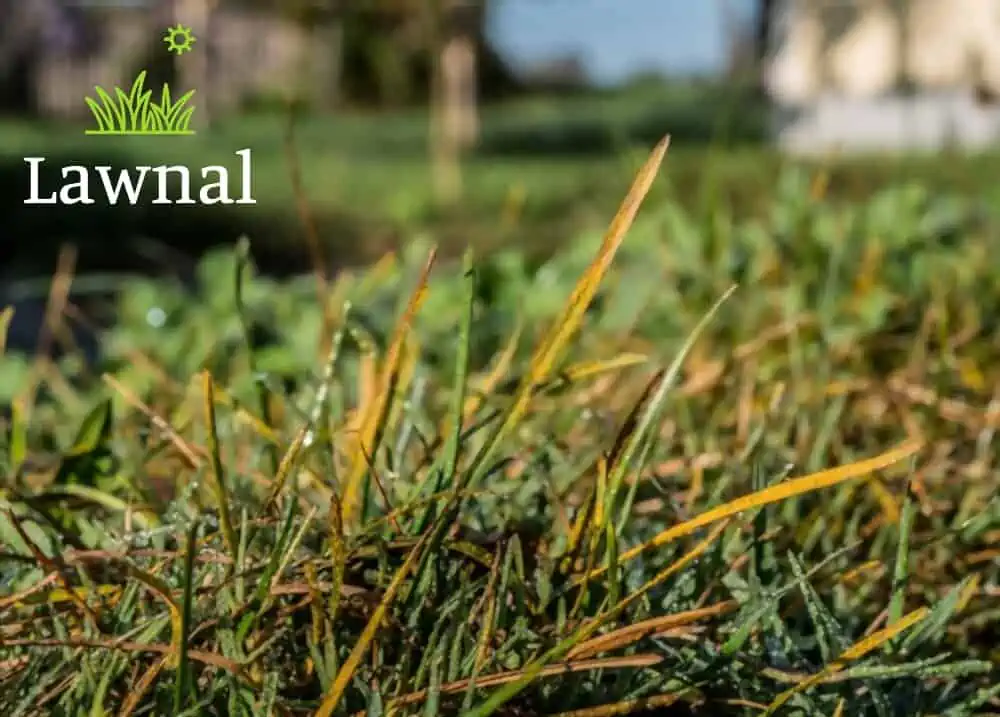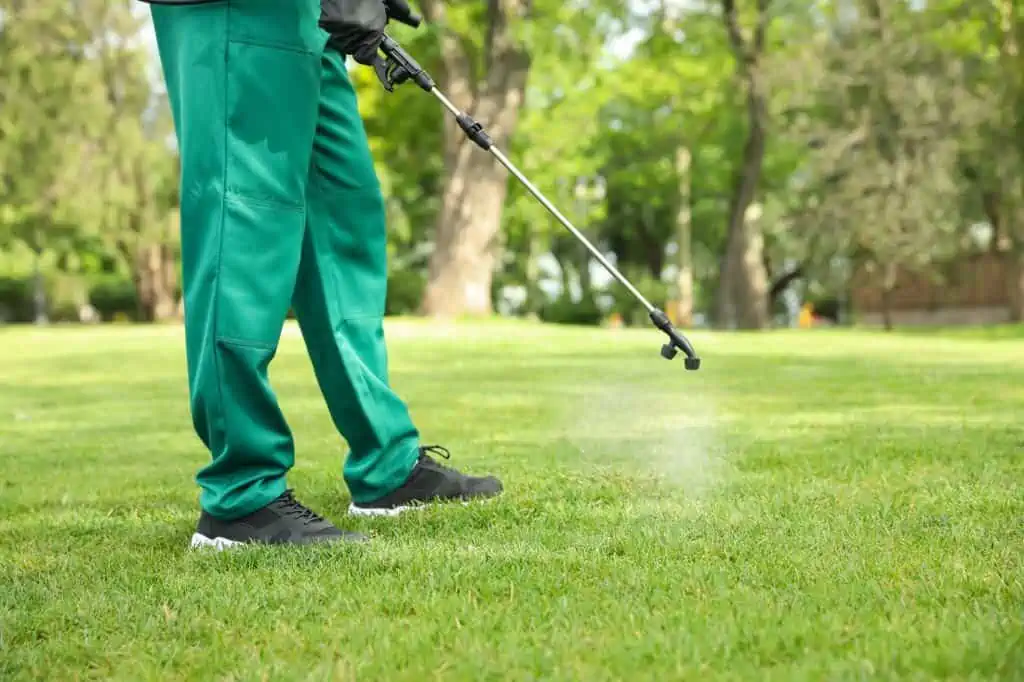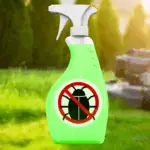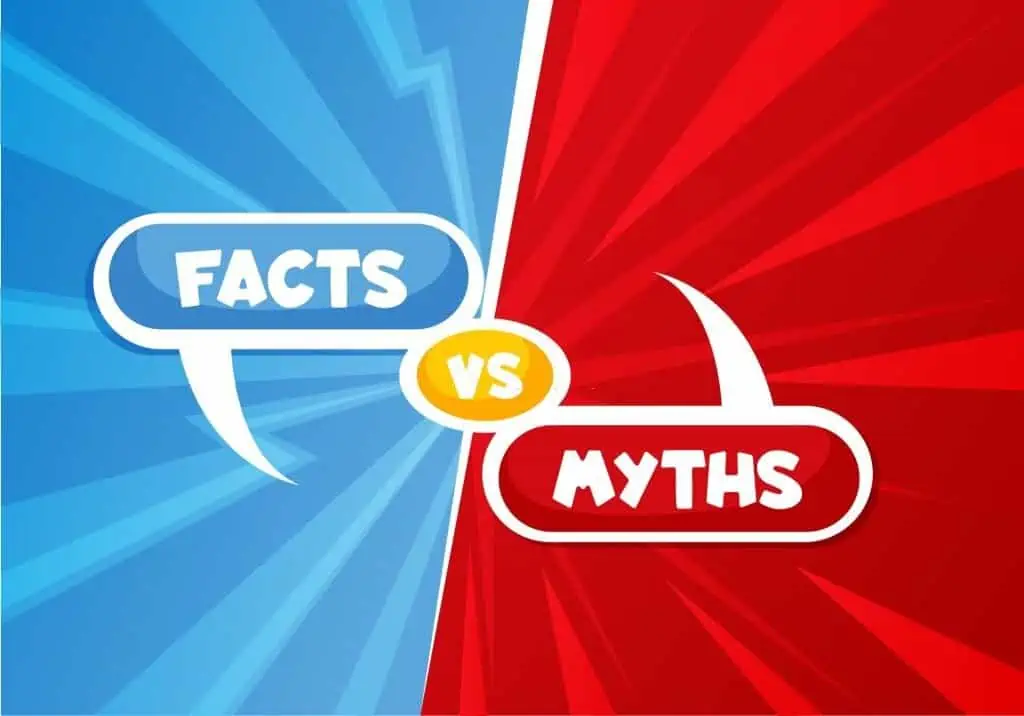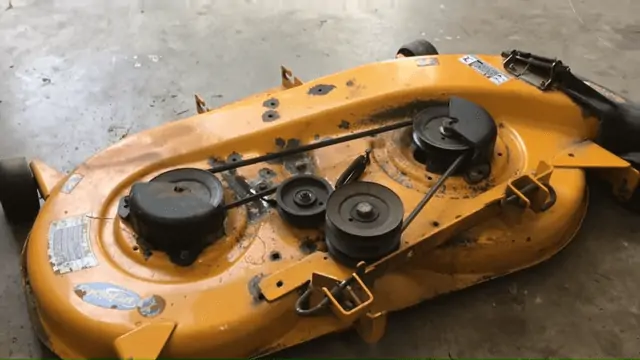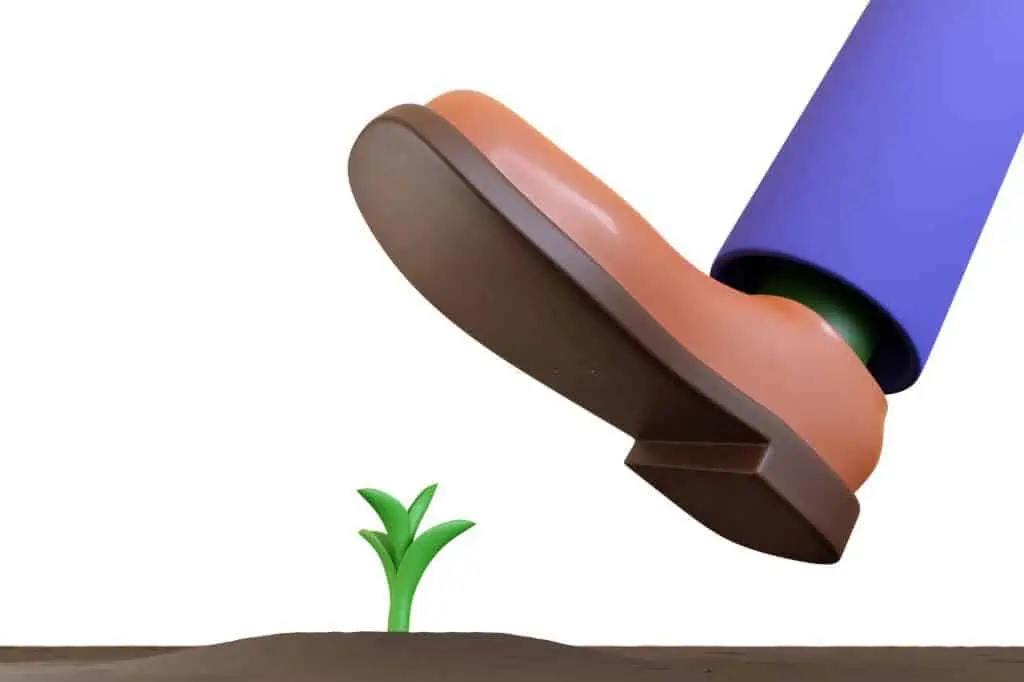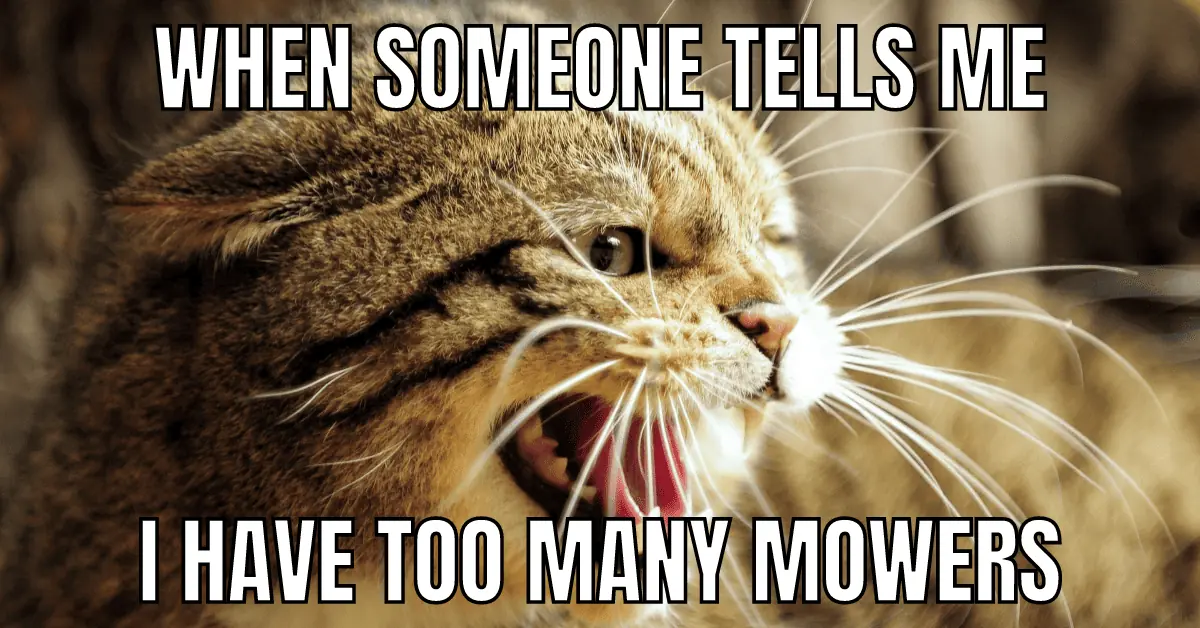Is grass fungus harmful to dogs? Are there things you can do to control these things? In this article, we will cover all these things.
Seeing the orange colored rust on the lawn you have always cared for can be disheartening. However, this is no big deal. Even golf lawns do get grass rust (you may not see them because they are controlled asap).
Let’s start by explaining the mystery behind that orange or reddish-brown stuff on your lawn.
What is grass rust?
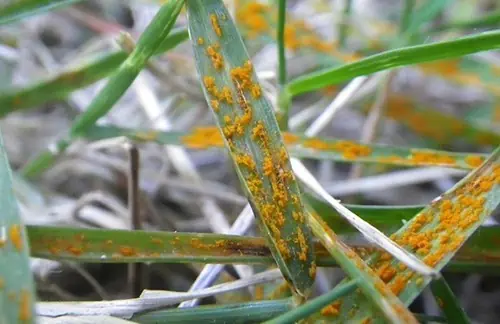
Grass rust is a disease caused by fungi that make grasses have a powdery substance on their blades which causes them to turn yellow, orange, or red.
This disease affects some species like ryegrass, Kentucky bluegrass, tall fescue, etc. This is not something you want on your lawn.
Don’t mistake nutritional deficiencies for lawn rust; for example, the blades may turn yellow when your grass lacks iron. Confirm the powdery substance to make sure it is grass rust.
What causes rust fungus on grass?
Rust spots in the lawn are caused by a fungus (siblings of yeast and mushrooms). These fungi can be Uromyces or Puccinia species.
It occurs when your grass is deficient in nitrogen when the weather is dry and during early fall or late summer.
The spores of this disease-causing fungus spread faster than anything you can imagine, affecting your whole lawn. Don’t worry; we will discuss the control methods you can use for rust.
Is Lawn rust harmful to pets?
Lawn rust is not harmful to pets. Whether you have a dog, cat, guinea pig, or even a dragon as a pet, they are free to roam on your lawn with rust on it.
The only problem is that your pet may get powdery substances on its skin, fur, or hair. This can easily be removed. However, your pet may carry the microscopic spores from one part of the lawn to another or a lawn close to your house. The spores will cause rust in its new location.
Even though this is a fungal disease, it cannot affect your dogs or you. Lawn rust is not harmful to humans and animals.
Is Rust fungus on grass dangerous to dogs?

No, grass fungus cannot make dogs sick. If your dog is sick, it was caused by something else, not rust. Take your dog to the veterinarian to diagnose the sickness and treat it.
Grass fungus can only make your dog sneeze if inhaled (it irritates their nostrils), but it can’t make them sick. If your dog is covered in lawn rust (maybe after playing on your lawn), give it a nice bath.
Lawn rust may go away if the fungus growth is stopped. Since the fungus loves an environment with high humidity, it will disappear during autumn as this doesn’t favor its survival.
If the grass has a regular nitrogen supply, there is a high chance that grass fungus will go away on its own.
- Will A Lawn Sweeper Pick Up Walnuts, Apples, Or Acorns?
- Can You Mow Over Lawn Netting?
- What Causes Lawn Depressions And How To Fix It
What to do about it
You can do many things about the rust on your lawn, but we will talk about the most effective control methods.
- Aerate your lawn
- Mow your lawn to an average height. Not too low, not too high; the thicker, the better.
- Supply nitrogen to your grass by using nitrogen-based fertilizer. You may also want to test your soil to avoid using too much fertilizer. September is the best time to do this.
- Water your grass early in the morning.
- Leave the lawn rust and move on with your life. It will probably leave on its own
- Use fungicide if the lawn rust is severe and you are out of options.
Don’t go for option six if all you have is a small patch of grass rust on your lawn; inappropriate use of fungicide has side effects. Lawn rust is common, and you aren’t the first man to experience this on their lawn. Don’t uproot your grass because of the rust; you only spread the spores.
In conclusion, lawn rust is not harmful to dogs or humans and can be easily controlled or left alone as it will leave alone.
References
- Gautam, A. K., Avasthi, S., Verma, R. K., Niranjan, M., Devadatha, B., Jayawardena, R. S., Suwannarach, N., & Karunarathna, S. C. (2022). A Global Overview of Diversity and Phylogeny of the Rust Genus Uromyces. Journal of Fungi, 8(6). https://doi.org/10.3390/jof8060633
